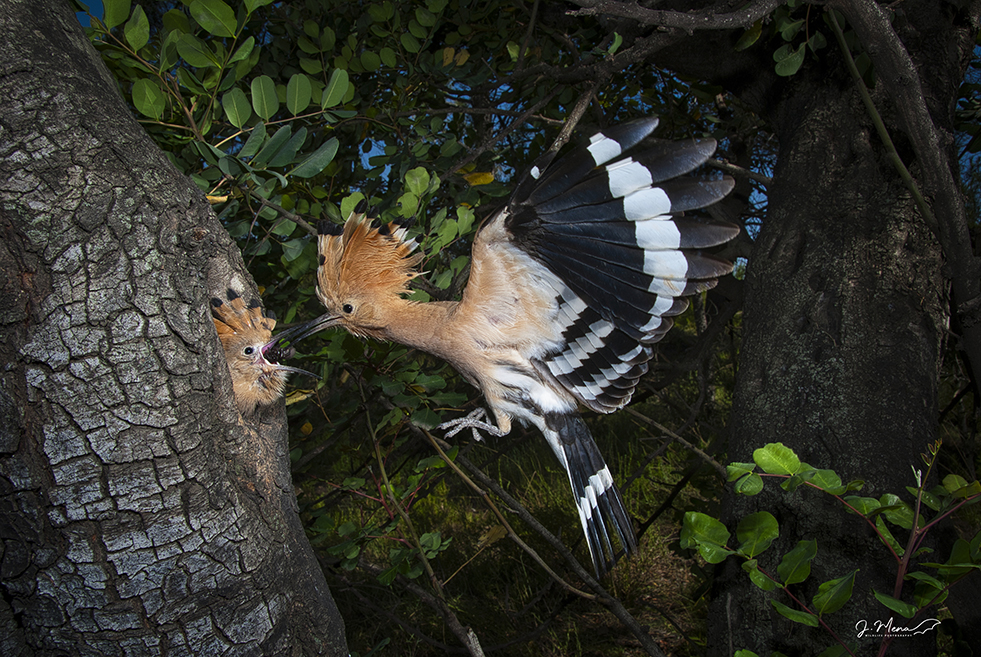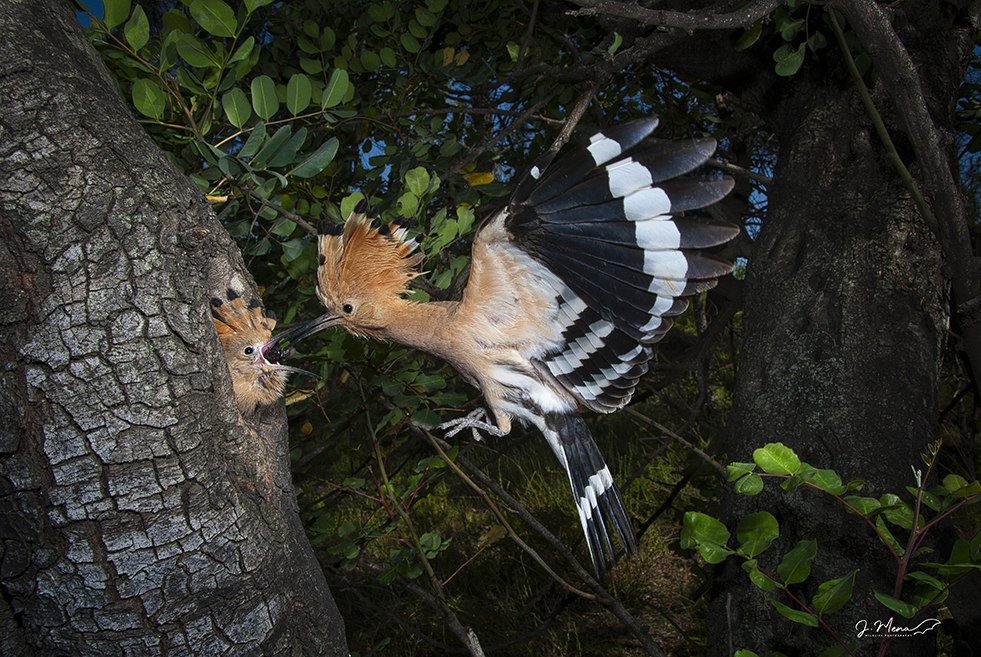About the revealed II

Continuing with the thread of my previous article on developing, and remembering some points in which I told you how a nature photographer should act in the most correct way possible, when teaching their work, such as trying to transmit the most plausible way, the lived reality, without deception and without altering it, this time I bring you as an example, a photograph that I took some years ago, working on a hoopoe nest inside some garroferos. To take the shots, I opted for the remote shooting method of the camera, which was properly camouflaged with the tripod and the flashes (which, shooting manually at high power, would stop the movement of the hoopoe) at a meter and a bit from distance. It goes without saying that to approach this type of work with birds during the breeding season, one has to act in a very ethical and responsible way, following the protocol of a good naturalist, in which one of the most important points is to make sure that the chickens are already well grown, abandoning any attempt at the slightest problem that may arise in the behavior of the fauna. In this case, and after several weeks of monitoring, and once I verified that the hoopoes had already become accustomed to my pots, I got ready to carry out my first session. Two front flashes fired at high speed, to stop the movement of the hoopoe on its arrival at the nest, with the prey in its beak, to bait its chick, and another flash to subtly illuminate the background, since otherwise we would be It would have been very dark. And the result, after several sessions doing framing corrections and so on, was the image shown below, the original, unretouched, RAW file.

Where we can appreciate an image that is shown to us washed out, without volume, little contrast, in short, very flat, which is the base where we are going to act to get the most out of it.

This second image shows us an excessively aggressive development, very typical of the mentality of that time in which digital photography began to emerge, where excessive lighting of the scene can be seen together with the intense oversaturation of colors.

This third image is much more correct, not so saturated and much more natural.

This fourth image is for me the ideal development, or at least the one that I like the most and the one that I think best fits the scene that my eyes saw that day. Minimum saturation, a little more contrast and what seems most important to me, a background with the minimum lighting provided by the background flash, which respects the dim light that seeped through the branches.
In these four images you can see my evolution as a nature photographer.
From there, everyone draw their own conclusions.

